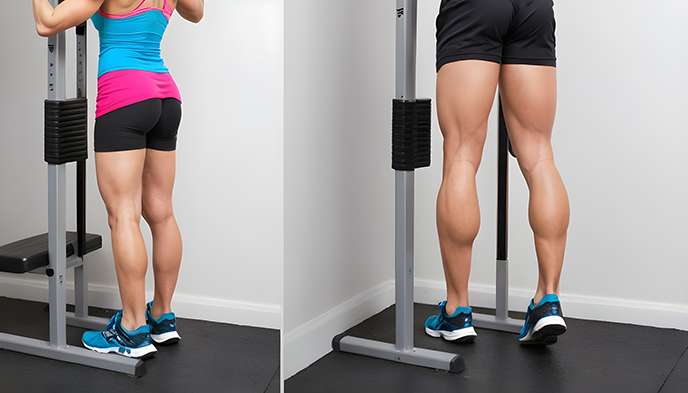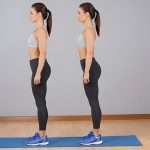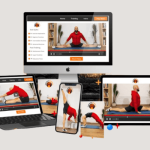Elevate your calf game with standing calf raises. This powerful exercise targets and tones your calf muscles, enhancing strength and definition. Whether you’re a fitness enthusiast or a beginner, standing calf raises offer a simple yet effective way to level up your lower body workout routine.
Say goodbye to weak calves and hello to sculpted legs by incorporating this exercise into your regimen. Get ready to feel the burn as you work towards stronger, more defined calves that will set you apart from the rest.
Standing Calf Raise Basics
Proper Form
Maintain a straight back while performing standing calf raises to avoid strain. Keep heels grounded and execute smooth, controlled movements without sudden jerks.
Benefits
Standing calf raises strengthen calf muscles, boosting stability and balance. They also enhance ankle flexibility and range of motion, crucial for various physical activities. They play a vital role in injury prevention during workouts or sports.
Targeted Muscles
The standing calf raise primarily targets the gastrocnemius and soleus muscles in the calves. By engaging these muscles, you promote balanced development across the entire calf complex. Furthermore, there is secondary involvement of the hamstrings and glutes, contributing to overall lower body strength.
Variations of Calf Raises
Seated Calf Raise
To perform seated calf raises, keep your knees bent at a 90-degree angle. Use either a calf raise machine or a seated calf raise bench for this exercise. Emphasize the stretch at the bottom of the movement to target the calf muscles effectively.
Assisted Standing
When doing assisted standing calf raises, rely on a wall or sturdy object for balance support. As your strength improves, gradually reduce assistance to challenge yourself more. Focus on achieving a full calf contraction during each repetition to maximize results.
On a Step
For calf raises on a step, position the balls of your feet on the edge of a step platform. Lower your heels below the level of the step to ensure a deep stretch in the calves. Rise onto your toes slowly and in a controlled manner to engage the calf muscles fully.
Dumbbell Variation
Incorporate dumbbells into your standing calf raises for added resistance and muscle engagement. Hold a dumbbell in each hand while performing this variation with arms by your sides. Increase the weight gradually as you progress to continuously challenge and strengthen your calves.
Correct Foot Positioning
Foot Position Changes
Experiment with different foot angles for varied muscle engagement. Try pointing toes inward, outward, and straight ahead. Adjust foot positioning to target specific areas of the calves.
Incorporating various foot positions during standing calf raises can effectively work different parts of the calf muscles. By pointing your toes inward, you emphasize the outer portion of the calves, creating a distinct muscle burn in that area. Conversely, pointing your toes outward places more stress on the inner calf muscles, promoting balanced development.
For those seeking overall calf development, performing calf raises with toes pointed straight ahead is beneficial. This position engages both the inner and outer calf muscles evenly, ensuring comprehensive growth and strength. Experimenting with these foot positioning variations not only adds diversity to your workout routine but also enables you to address specific weaknesses or imbalances in your calves.
Pre-Exercise Stretching
Importance of Stretching
Calf stretches play a crucial role in maintaining muscle flexibility and preventing injuries during standing calf raises. By prioritizing calf stretches, you ensure that your muscles are adequately prepared for the exercise. After completing your calf exercises, it is essential to engage in static stretches to help with muscle recovery and prevent tightness.
In addition to static stretches, incorporating dynamic stretches into your warm-up routine can further enhance your overall performance. Dynamic stretching involves moving parts of your body and gradually increasing reach and speed. This type of stretching helps improve blood flow, increase joint flexibility, and prepare your muscles for more intense physical activity.
Remember, proper stretching techniques not only improve your workout but also reduce the risk of strains or sprains. Incorporating a variety of stretching methods into your exercise routine can lead to better overall muscle health and performance.
Performing the Exercise
Controlled Pace
Execute calf raises slowly to maximize muscle activation. Avoid rapid movements to maintain time under tension for optimal results. Focus on both the upward and downward phases of the exercise to engage muscles effectively.
Body Positioning
Stand tall with shoulders back and core engaged for proper alignment. Maintain a stable posture throughout, ensuring no leaning forward or backward during calf raises. Correct body positioning helps target the calf muscles efficiently.
Optimal Repetitions
Aim for 12-15 repetitions per set to enhance muscle endurance. Adjust the number of reps based on individual fitness goals and capabilities. Gradually increase repetitions as strength improves over time.
Common Mistakes
Going Too Fast
Avoid rushing through calf raises; focus on engaging your muscles effectively with controlled movements. Slow down to maximize each repetition’s benefits and range of motion.
Folding Forward
Maintain an upright position during calf raises to prevent strain on your lower back. Keep your spine neutral and avoid leaning forward, ensuring proper form and safety.
Too Few Reps
If calf raises feel too easy, increase the number of repetitions or sets for a more challenging workout. Aim to reach muscle fatigue within the desired rep range to see progress.
Safety and Precautions
Safety Measures
When performing standing calf raises, ensure you prioritize safety to minimize the risk of injuries. Firstly, invest in proper footwear that provides excellent ankle support. This helps stabilize your feet during the exercise, reducing the chance of accidents.
To further enhance safety, begin your calf raise routine with lighter weights. This allows you to focus on mastering the correct form before progressing to heavier loads. Remember, technique is crucial in preventing strains or sprains.
Always pay attention to your body’s signals during calf raises. If you experience any discomfort or pain, stop immediately. Listening to your body and respecting its limits is essential for avoiding overexertion and potential injuries.
Incorporating these safety measures not only safeguards you from harm but also ensures a more effective and rewarding calf workout experience.
Try It Out
Starting the Exercise
Before diving into standing calf raises, it’s crucial to begin with a brief warm-up to prime your calf muscles. Make sure to engage in dynamic stretches like ankle circles or leg swings to get the blood flowing.
Position your feet hip-width apart on a flat surface, ensuring that your weight is evenly distributed. This stance provides stability and support throughout the exercise, preventing any unnecessary strain on your ankles or knees.
Take a deep breath in, engaging your core muscles for stability, before slowly lifting your heels off the ground. The controlled movement helps target the calf muscles effectively, maximizing the benefits of each repetition.
Remember to maintain proper form throughout the exercise by keeping your back straight and shoulders relaxed. Focus on the upward movement as you raise your heels as high as possible, then lower them back down slowly to complete one repetition.
Closing Thoughts
You’ve mastered the art of standing calf raises. By understanding the basics, exploring variations, and perfecting your form, you’re on your way to stronger and more defined calves. Remember to prioritize safety, avoid common mistakes, and always listen to your body during the exercise. Now it’s time to put all this knowledge into action.
Take what you’ve learned and hit the gym with confidence. Incorporate these techniques into your workout routine, challenge yourself with different variations, and watch your calf muscles grow stronger. Stay consistent, stay focused, and most importantly, enjoy the journey to healthier and more powerful calves!



